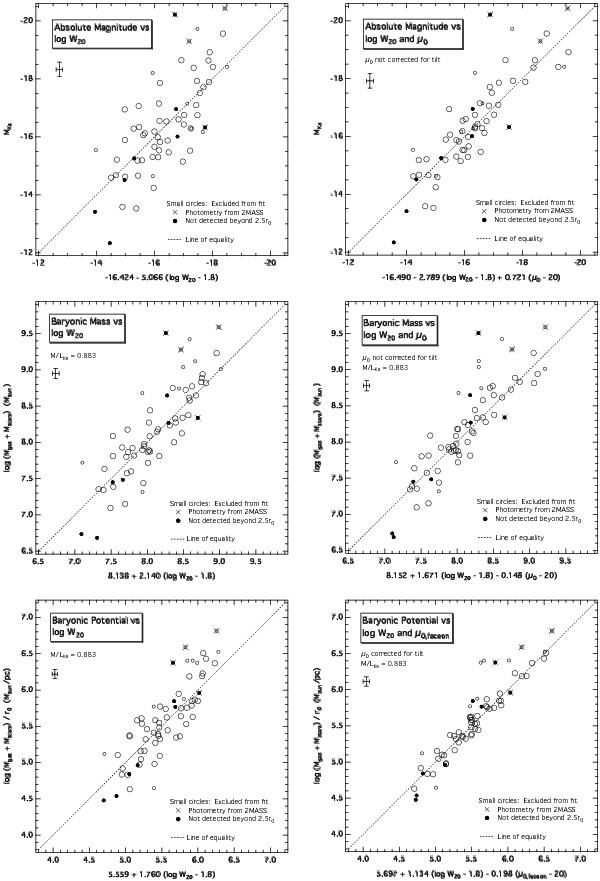Fig. 3

Correlations among intrinsic and observed properties of star-forming dwarfs. In all panels, line widths have been corrected for resolution but not for tilt. In magnitude units, the range of ordinates is the same for all panels, so vertical dispersions are directly comparable. Typical uncertainties in abscissae and ordinates are depicted by an error cross in the upper left corner of each panel. Top left: absolute magnitude in Ks versus the HI line width (the Tully-Fisher relation); top right: absolute magnitude in Ks versus the HI line width and the observed central surface brightness (the dI fundamental plane of Vaduvescu et al. 2005, with an updated fit). Correcting the surface brightnesses for tilt worsens the fit; middle left: baryonic mass versus the HI line width, based upon a mass-to-light ratio in Ks derived from the fit to the potential plane; Middle right: baryonic mass versus the HI line width and the observed central surface brightness, based upon a mass-to-light ratio in Ks derived from the fit to the potential plane. Correcting the surface brightnesses for tilt does not improve the fit; bottom left: baryonic potential versus the HI line width, based upon a mass-to-light ratio in Ks derived from the fit to the potential plane; bottom right: baryonic potential versus the HI line width and tilt-corrected central surface brightness (the potential plane), based upon a mass-to-light ratio in Ks derived during the fitting. In all panels, every galaxy in the sample is plotted, but only galaxies marked with large circles were fitted. Excluded from the fits were four galaxies observed exclusively by 2MASS (crosses), six galaxies in addition to two 2MASS galaxies for which photometry did not extend beyond 2.5 sech scale lengths (solid circles), one galaxy with an unusual morphology (small open circle), and seven extreme outliers identified while fitting the potential (small open circles).
Current usage metrics show cumulative count of Article Views (full-text article views including HTML views, PDF and ePub downloads, according to the available data) and Abstracts Views on Vision4Press platform.
Data correspond to usage on the plateform after 2015. The current usage metrics is available 48-96 hours after online publication and is updated daily on week days.
Initial download of the metrics may take a while.


